Top 10 AI Tools for HR: Revolutionizing Workforce Management
Discover the top 10 AI tools for HR in 2025, from Paradox for recruitment to Visier for analytics. Revolutionize talent acquisition, employee engagement, performance management, and more with ethical, data-driven HR solutions.
The rapidly evolving landscape of human resources is placing unprecedented demands on HR professionals. From talent acquisition and employee engagement to performance management and strategic workforce planning, the sheer volume and complexity of tasks can be overwhelming. Traditional HR processes, often manual and siloed, are increasingly time-consuming, prone to unconscious bias, and frequently lack the data-driven insights necessary for truly strategic decision-making. This is where the power of AI tools for HR steps in. Artificial intelligence offers unprecedented opportunities for enhancing efficiency, driving strategic impact, and significantly improving the overall employee experience. This article will unveil the "Top 10 AI Tools for HR," delving into specific applications like ChatGPT, addressing critical ethical considerations, and guiding you on how to choose and implement the right HR AI tools for your organization. Our selection criteria for these best AI tools for HR will be briefly touched upon, ensuring a comprehensive and practical guide to leveraging modern HR technology.
Why AI is Revolutionizing Human Resources
AI in HR is not merely a trend; it's a fundamental shift in how organizations manage their most valuable asset: people. The revolution is driven by AI's ability to transform core HR functions, making them more efficient, insightful, and employee-centric. One of the most significant impacts is on enhancing efficiency and automation. AI tools can automate repetitive, administrative tasks such as screening resumes, answering common employee FAQs, and managing routine onboarding paperwork. This frees up HR teams from mundane operational duties, allowing them to focus on more strategic initiatives.
Furthermore, AI drives data-driven decision making by leveraging advanced analytics for workforce planning, talent management, and retention strategies. Predictive models can identify flight risks, pinpoint skill gaps, and forecast future talent needs, enabling proactive HR strategy. Beyond efficiency, AI significantly improves employee experience and engagement through personalized learning paths, instant support via chatbots, and proactive wellbeing initiatives. Finally, AI helps address modern HR challenges, from tackling persistent skills gaps and fostering diversity, equity, and inclusion (DEI) to navigating the complexities of remote work and hybrid models. Digital HR solutions powered by AI are becoming indispensable for effective workforce management.
Our Methodology for Selecting the Top AI Tools for HR
In curating our list of the top AI tools for HR, we employed a rigorous methodology designed to identify solutions that offer genuine value and practical applicability for modern HR leaders. Our primary focus was on practical impact and ROI, prioritizing tools that demonstrate clear business value and measurable returns, such as reduced time-to-hire, improved retention, or enhanced productivity. We also heavily weighted the ease of integration with existing HR tech stack, recognizing that seamless compatibility with HRIS and ATS systems is crucial for successful adoption and avoiding data silos.
Innovation and specific use case alignment were key criteria, ensuring that each selected tool addresses critical HR functions, whether it's recruiting, employee engagement, or performance management, with cutting-edge AI capabilities. User experience and vendor reliability were also paramount; we looked for intuitive interfaces, robust customer support, and positive user reviews to ensure a smooth and effective experience. Finally, and perhaps most critically, we assessed data security and ethical considerations, prioritizing vendors with strong privacy protocols, compliance certifications, and demonstrable efforts in bias mitigation to ensure responsible AI adoption in HR software. These criteria ensure our list represents the best AI tools for HR available today.
The Top 10 AI Tools for HR: A Curated List for Modern HR Teams
The landscape of HR technology is rapidly evolving, with AI tools for HR leading the charge in transforming how organizations manage their workforce. Here’s a curated list of the top 10 AI tools that are making a significant impact across various HR functions.
1. AI-Powered Recruitment & Talent Acquisition
- Examples: Paradox (Olivia), HireVue
- Primary Function: Automating and enhancing the hiring process from sourcing to interviewing.
- Key Features: AI chatbots for candidate screening and scheduling, video interviewing with AI analysis, resume parsing, predictive analytics for candidate success.
- Benefits: Reduces time-to-hire, improves candidate experience, mitigates unconscious bias, expands talent pools.
- Limitations: Requires careful configuration to avoid bias, potential for over-reliance on algorithms.
- Ideal Use Case: High-volume recruiting, specialized talent acquisition, improving diversity in hiring.
- Integration Notes: Integrates with major ATS systems (e.g., Workday, Greenhouse, Taleo).
2. Intelligent Onboarding & Employee Experience Platforms
- Examples: Leena AI, Workday Peakon Employee Voice
- Primary Function: Streamlining onboarding and continuously monitoring employee sentiment.
- Key Features: AI-powered chatbots for onboarding FAQs, personalized onboarding journeys, sentiment analysis from employee feedback, proactive support.
- Benefits: Boosts new hire productivity, increases employee satisfaction, reduces early attrition, provides actionable insights into engagement.
- Limitations: Requires consistent data input, interpretation of sentiment can be nuanced.
- Ideal Use Case: Companies looking to improve new hire retention and foster a positive employee experience.
- Integration Notes: Often integrates with HRIS platforms for employee data synchronization.
3. Performance Management & Feedback Systems with AI Insights
- Examples: Lattice, Betterworks
- Primary Function: Providing continuous performance feedback and data-driven insights for development.
- Key Features: AI-driven sentiment analysis of feedback, goal tracking, personalized coaching recommendations, predictive analytics for performance trends.
- Benefits: Fosters a culture of continuous feedback, identifies high-potential employees, helps address performance gaps proactively.
- Limitations: Requires active participation from managers and employees, AI insights need human interpretation.
- Ideal Use Case: Organizations moving away from annual reviews to continuous performance management.
- Integration Notes: Integrates with communication tools (Slack, Teams) and HRIS.
4. AI-Driven Learning & Development Platforms
- Examples: Degreed, EdCast
- Primary Function: Delivering personalized learning experiences and skill development.
- Key Features: AI-powered content recommendations, skill gap analysis, personalized learning paths, adaptive assessments.
- Benefits: Closes skill gaps faster, increases employee engagement with learning, supports career development, enhances workforce capabilities.
- Limitations: Content quality depends on input, requires employees to be self-motivated learners.
- Ideal Use Case: Companies committed to continuous learning, upskilling, and reskilling their workforce.
- Integration Notes: Integrates with HRIS for employee profiles and LMS for content delivery.
5. HR Automation & Operations Tools
- Examples: Rippling, ADP NextGen HCM
- Primary Function: Automating core HR administrative tasks and streamlining operations.
- Key Features: AI-powered payroll processing, benefits administration, compliance checks, automated workflows for HR requests.
- Benefits: Reduces administrative burden, minimizes errors, ensures compliance, frees up HR for strategic work.
- Limitations: Initial setup can be complex, customization might require technical expertise.
- Ideal Use Case: Small to large businesses seeking to centralize and automate their HR operations.
- Integration Notes: Comprehensive platforms that integrate various HR functions.
6. Workforce Analytics & Planning Solutions
- Examples: Visier, One Model
- Primary Function: Providing deep insights into workforce data for strategic planning and decision-making.
- Key Features: Predictive analytics for turnover, skills gaps, and hiring needs; scenario planning, diversity analytics, interactive dashboards.
- Benefits: Enables proactive workforce management, informs strategic HR decisions, optimizes talent allocation, identifies future talent needs.
- Limitations: Requires clean and comprehensive data, insights need skilled interpretation.
- Ideal Use Case: HR leaders and executives focused on data-driven HR strategy and long-term workforce planning.
- Integration Notes: Gathers data from multiple HR systems (HRIS, ATS, LMS).
7. AI for Compensation & Benefits Optimization
- Examples: Compa, Pave
- Primary Function: Ensuring competitive and equitable compensation structures.
- Key Features: Real-time market data analysis, AI-driven compensation recommendations, pay equity audits, benefits utilization analysis.
- Benefits: Attracts and retains top talent, ensures fair pay practices, optimizes benefits spending, improves employee satisfaction.
- Limitations: Data accuracy is crucial, market fluctuations require continuous monitoring.
- Ideal Use Case: Organizations looking to refine their compensation strategy and ensure pay equity.
- Integration Notes: Integrates with HRIS and payroll systems.
8. Diversity, Equity, & Inclusion (DEI) Tools
- Examples: Textio, Blendoor
- Primary Function: Identifying and mitigating bias in HR processes to foster a more inclusive workplace.
- Key Features: AI-powered language analysis for job descriptions to remove biased wording, anonymized resume screening, diversity analytics, bias detection in performance reviews.
- Benefits: Increases diversity in hiring, promotes equitable opportunities, creates a more inclusive culture, enhances employer brand.
- Limitations: Tools are aids, human commitment to DEI is still paramount.
- Ideal Use Case: Companies committed to strengthening their DEI initiatives and building a diverse workforce.
- Integration Notes: Integrates with ATS and HRIS for data analysis.
9. Employee Wellbeing & Mental Health Support
- Examples: Calm Business, Headspace for Work
- Primary Function: Providing accessible mental health and wellbeing resources to employees.
- Key Features: Guided meditation, mindfulness exercises, sleep programs, stress reduction tools, personalized content based on user needs.
- Benefits: Reduces employee stress, improves mental resilience, boosts productivity, demonstrates employer care.
- Limitations: Adoption depends on employee willingness, not a substitute for clinical therapy.
- Ideal Use Case: Organizations prioritizing employee wellbeing and mental health as part of their benefits package.
- Integration Notes: Typically standalone platforms, sometimes offered as part of broader benefits packages.
10. AI-Enhanced HR Service Delivery & Helpdesks
- Examples: ServiceNow HRSD, Zoho People Plus
- Primary Function: Automating and streamlining HR service requests and support.
- Key Features: AI-powered chatbots for instant answers to HR queries, self-service portals, automated ticket routing, knowledge base management.
- Benefits: Improves HR responsiveness, reduces HR team workload, enhances employee satisfaction with HR services, provides 24/7 support.
- Limitations: Requires comprehensive knowledge base, complex queries may still need human intervention.
- Ideal Use Case: Large organizations with high volumes of employee inquiries, seeking to optimize HR service delivery.
- Integration Notes: Integrates with HRIS, payroll, and other internal systems to access relevant employee data.
These AI tools for HR are transforming various aspects of workforce management, offering powerful capabilities for efficiency, insight, and an improved employee experience.
Deep Dive: ChatGPT and Generative AI for HR
Generative AI, exemplified by tools like ChatGPT, represents a powerful new frontier for HR professionals. These AI tools for HR automation can generate human-like text, code, images, and more, opening up a myriad of practical applications for HR teams.
For instance, generative AI can significantly speed up content creation. HR professionals can use it for drafting job descriptions, ensuring they are engaging and inclusive, or generating a diverse set of interview questions tailored to specific roles. It's also invaluable for creating concise policy summaries, making complex HR documents more accessible to employees. Personalized employee communications, from onboarding welcome messages to performance feedback prompts, can be drafted quickly. Furthermore, generative AI can assist in creating engaging training content, outlines, and quizzes, enhancing learning and development initiatives. It can also power HR chatbots and virtual assistants, providing instant answers to common employee queries, thereby improving HR service delivery.
The key benefits for HR teams are undeniable: speed and efficiency in content generation, quick information retrieval, and the ability to support robust HR chatbots. However, critical limitations and risks must be acknowledged. Data privacy concerns are paramount; inputting sensitive employee or company information into public generative AI models poses significant security vulnerabilities. There's also the potential for bias in generated content, as AI models learn from vast datasets that may reflect societal biases. Accuracy issues can arise, as generative AI can sometimes "hallucinate" information, presenting incorrect data as fact. Finally, while efficient, these tools lack human empathy and nuanced understanding, which are crucial in many HR interactions.
Best practices for using generative AI in HR include maintaining human oversight for all generated content, employing clear prompt engineering to guide the AI effectively, and rigorous fact-checking. Establishing internal guidelines for data input and usage is also vital to mitigate risks and ensure ethical AI in HR.
Ethical AI in HR: Data Privacy, Bias, and Transparency
As AI in HR becomes more prevalent, addressing ethical considerations is not just good practice—it's a strategic imperative. The responsible adoption of AI tools for HR hinges on safeguarding employee data, mitigating algorithmic bias, and ensuring transparency.
Safeguarding employee data and privacy is paramount. HR deals with highly sensitive personal information, making compliance with regulations like GDPR, CCPA, and other local data protection laws non-negotiable. This involves implementing robust data anonymization techniques where possible, ensuring secure data handling protocols, and clearly communicating data usage policies to employees. Any HR technology solution must demonstrate a commitment to data security.
Mitigating algorithmic bias in HR processes is another critical area. AI algorithms, if trained on biased historical data, can perpetuate and even amplify existing biases in hiring, promotion, and performance evaluation. This can lead to discriminatory outcomes. To counter this, HR strategy must include identifying and addressing bias in algorithms, actively seeking diverse training data sets, and conducting regular audits of AI systems to ensure fairness and equity. Tools like Textio, mentioned earlier, specifically help with this by analyzing language for bias.
Ensuring transparency and explainability means understanding how AI makes decisions. HR professionals and employees should not view AI as a black box. Providing clear rationales for AI-driven outcomes, especially in critical areas like hiring or performance, builds trust and accountability. This doesn't mean revealing proprietary algorithms, but rather explaining the criteria and data points used by the AI.
Ultimately, building trust through responsible AI adoption requires developing internal AI ethics policies, fostering a culture of accountability within the HR team, and committing to continuous monitoring and improvement of AI systems. Ethical AI in HR is not a one-time fix but an ongoing commitment to fairness, privacy, and human dignity in the digital age.
How to Choose the Right AI Tool for Your HR Team
Selecting the right AI tools for HR can be a daunting task given the myriad of options available. A strategic approach is essential to ensure your investment yields tangible benefits and aligns with your organizational goals.
First, define your HR needs and strategic goals. What are your specific pain points? Are you looking to reduce time-to-hire, improve employee retention, streamline administrative tasks, or enhance leadership development? Clearly identifying desired outcomes will narrow down your search for relevant HR software and HR solutions. Without a clear problem statement, it's easy to get lost in the features.
Next, evaluate integration with existing HRIS/ATS. Seamless data flow is critical. A new AI tool should integrate effortlessly with your current HR information systems and applicant tracking systems to avoid creating data silos and to ensure a unified view of employee data. Compatibility is key to maximizing the ROI of AI in HR.
Consider scalability, budget, and ROI. Choose solutions that can grow with your company, whether you're a small business or a large enterprise. Assess the total cost of ownership, including implementation, training, and ongoing maintenance. Crucially, look for a clear cost-benefit analysis and a demonstrable return on investment. A tool might be powerful, but if it doesn't fit your budget or offer a clear ROI, it's not the right fit.
Assess vendor reputation, support, and security. Partner with reliable vendors who have a proven track record, offer robust customer support, and prioritize data security with strong protocols and compliance certifications. Check user reviews and case studies. Finally, prioritize user experience and adoption potential. The best HR technology is one that HR professionals and employees will actually use. Tools should be intuitive, easy to learn, and enhance rather than complicate workflows. A poor user experience will hinder adoption and negate any potential benefits.
Implementing AI in HR: Challenges and Best Practices
Implementing AI in HR is a transformative journey, but it's not without its hurdles. Understanding common implementation challenges and adopting best practices can pave the way for successful AI adoption in HR.
One of the primary challenges is overcoming resistance to change. Employees and even HR professionals may be wary of new technology, fearing job displacement or a loss of human touch. Ensuring data quality is another significant hurdle; AI systems are only as good as the data they're fed, and poor data can lead to inaccurate insights or biased outcomes. Managing technical complexities, such as integration with existing systems and ensuring robust IT infrastructure, also requires careful planning.
Strategies for effective change management are crucial. Start with clear communication about *why* AI is being implemented – focusing on how it will augment human capabilities, improve efficiency, and enhance the employee experience, rather than replace roles. Comprehensive training for HR teams and employees on how to use the new tools and interpret AI-driven insights is essential. Securing leadership buy-in from the outset provides the necessary sponsorship and resources. Involving employees in the process, perhaps through pilot programs or feedback sessions, can foster a sense of ownership and reduce resistance.
Finally, measuring the ROI and impact of AI initiatives is vital to demonstrate success and secure future investments. Define clear key performance indicators (KPIs) and metrics before implementation. These might include metrics like reduced time-to-hire, decreased employee turnover, improved employee satisfaction scores, cost reduction in administrative tasks, or increased engagement with learning platforms. Regularly track these metrics and communicate successes to stakeholders, showcasing the tangible benefits of your Digital HR transformation and how AI is contributing to your overall HR strategy.
The Future of AI in HR: Trends to Watch
The trajectory of AI in HR points towards an even more integrated, personalized, and strategic role within organizations. Several key trends are emerging that will shape the future of HR.
One significant trend is hyper-personalized employee experiences. AI will increasingly tailor career paths, learning recommendations, and benefits packages to individual employee needs and aspirations, moving beyond one-size-fits-all approaches. This level of personalization will significantly boost engagement and retention.
Advanced predictive analytics for workforce planning will become standard. AI will proactively identify skills gaps, forecast flight risks with greater accuracy, and predict future talent needs, allowing HR leaders to make highly informed, forward-looking decisions. This will transform HR strategy from reactive to truly proactive.
Crucially, AI will continue to function as an augmentation, not a replacement, for human HR professionals. The future of HR will see human-AI collaboration becoming the norm, with AI handling repetitive tasks and providing data-driven insights, freeing HR teams for strategic tasks, complex problem-solving, and empathetic human interactions. AI leadership development tools will also emerge to support this new collaborative model.
Finally, proactive employee wellbeing and mental health support will see significant AI integration. AI will identify patterns in employee data (anonymously and ethically) to offer early, personalized interventions and resources, moving beyond reactive support to preventative care, further enhancing workforce management and overall employee health.
Frequently Asked Questions (FAQ)
Q: What is the best AI tool for HR overall?
A: There isn't a single "best" tool, as it depends on your specific needs. Tools like Paradox for recruitment or Visier for analytics are top-tier in their respective niches.
Q: Can small businesses use AI tools for HR?
A: Absolutely! Many HR AI tools offer scalable solutions, with platforms like Rippling or Zoho People Plus providing comprehensive, affordable options for smaller teams.
Q: Are there any free AI tools for HR?
A: While dedicated enterprise-level AI tools for HR are typically paid, some platforms offer free trials. Generative AI tools like basic ChatGPT versions can also be used for free for drafting tasks.
Q: How does AI improve employee engagement?
A: AI improves engagement through personalized learning, instant support via HR chatbots, proactive wellbeing initiatives, and by freeing HR to focus on strategic, engaging programs.
Q: What are the biggest risks of using AI in HR?
A: The biggest risks include data privacy breaches, algorithmic bias leading to unfair outcomes, lack of transparency in decision-making, and over-reliance on technology without human oversight.
Embracing the AI Revolution in HR for a Smarter Future
The transformative power of AI tools for HR is undeniable, reshaping every facet of workforce management, from talent acquisition and employee engagement to performance and strategic planning. We've explored how these innovative HR AI tools are driving efficiency, enabling data-driven decisions, and enhancing the employee experience across the board. From specialized recruitment platforms to comprehensive HR automation suites and ethical AI frameworks, the opportunities are vast.
AI is not just a passing trend but a strategic imperative for modern HR. Organizations that embrace AI will gain a significant competitive advantage, fostering more agile, insightful, and employee-centric HR functions. We encourage HR leaders to explore these AI tools for HR, perhaps starting with pilot programs in areas with clear pain points, and strategically integrate AI to build a more efficient, data-driven, and ultimately, more human HR function. The future of HR is intelligent, and it's here, ready to be leveraged for a smarter, more impactful tomorrow.
Featured Tools

10Web is an AI-powered WordPress platform that offers automated website building, hosting, and optimization with AI assistance for content and image generation.

An AI-powered assistant that helps users manage and organize their digital information, turning raw data into structured insights.
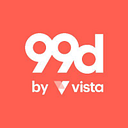
A global creative platform connecting businesses with freelance designers for custom graphic design projects.

A1.art is an AI art generator that transforms text descriptions into unique digital artworks across various styles.
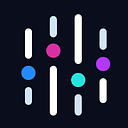
An AI platform that automates the entire lifecycle of building, deploying, and monitoring custom AI models.
Top AI Categories
Related Articles
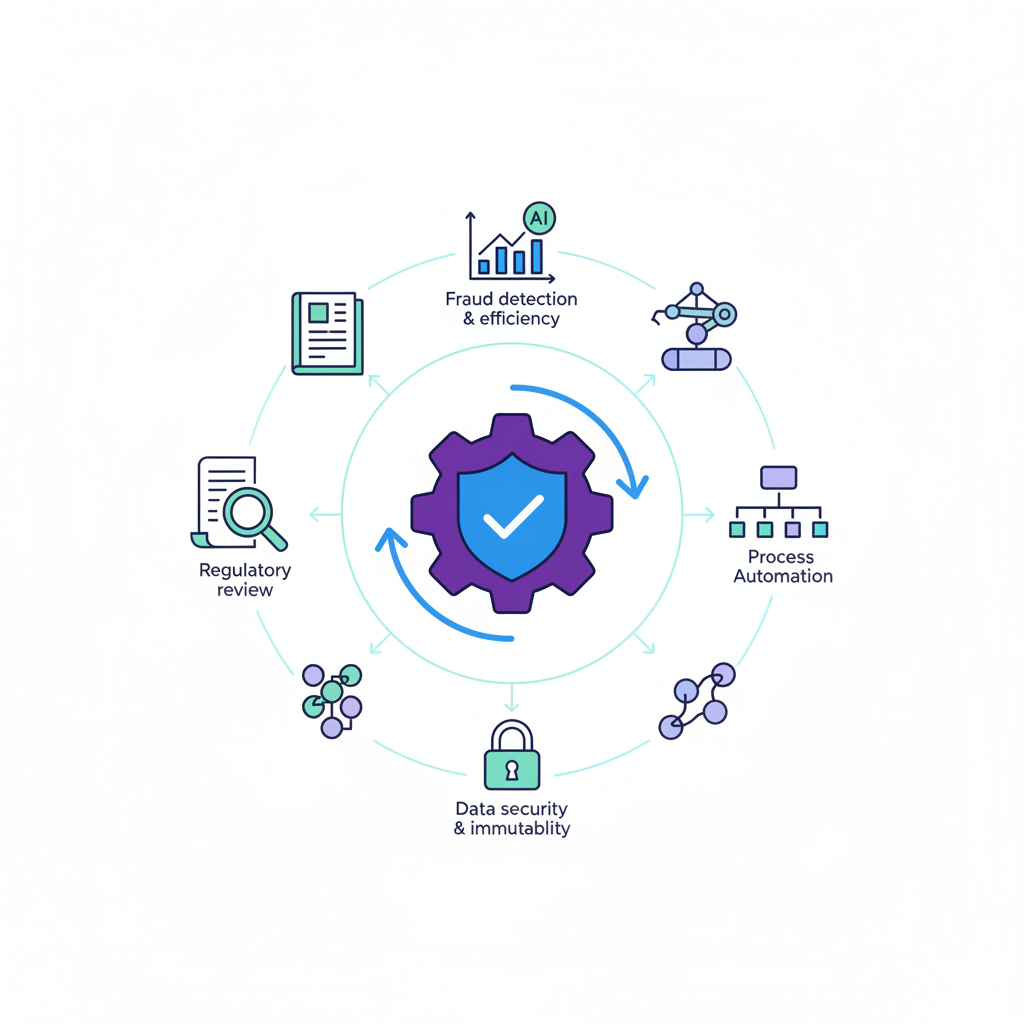
AI for financial services: compliance & automation
Discover how AI is revolutionizing financial services through advanced compliance automation, real-time fraud detection, regulatory reporting, and hyper-personalized customer experiences. Explore the future of intelligent, efficient, and secure banking.
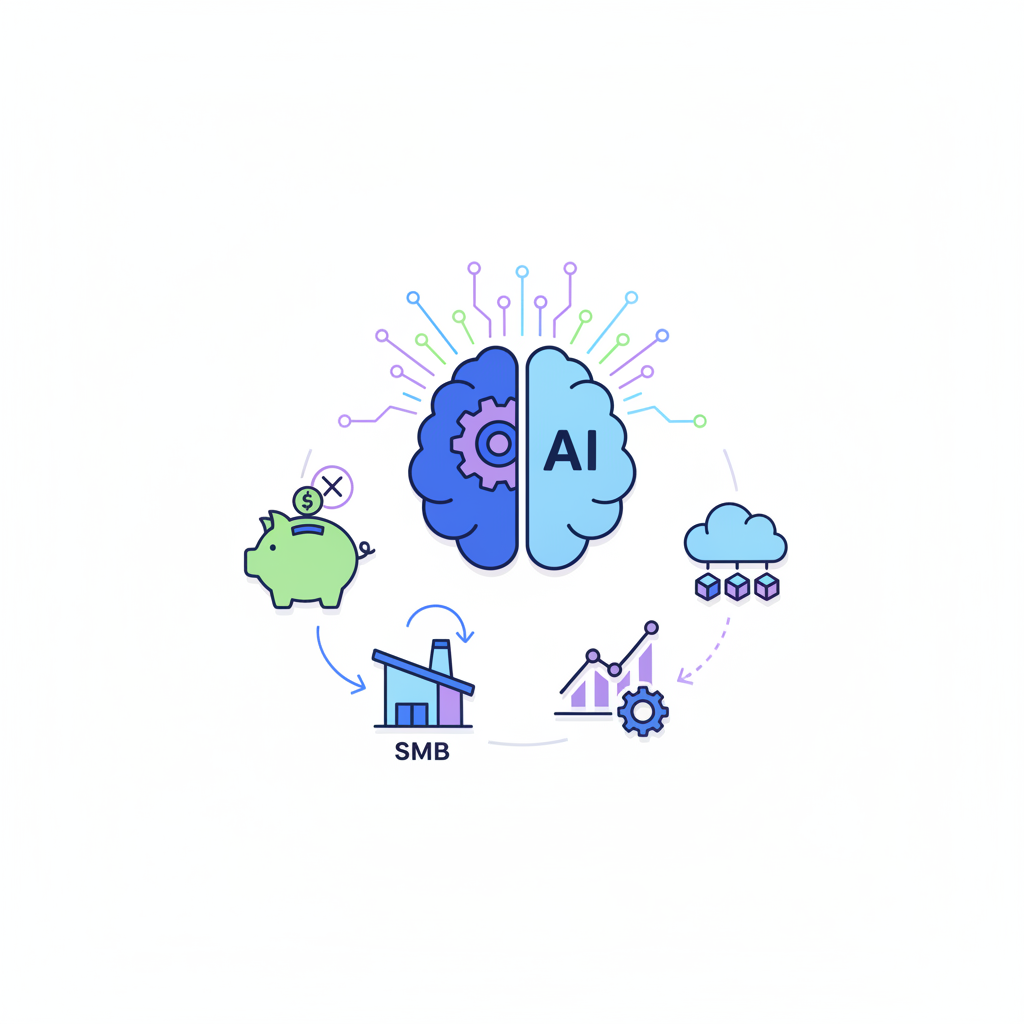
How SMBs can adopt AI without big spending
Discover how small and medium businesses can adopt AI affordably. This practical guide covers low-cost tools, quick wins, real-world examples, and step-by-step strategies to integrate AI without breaking the bank.
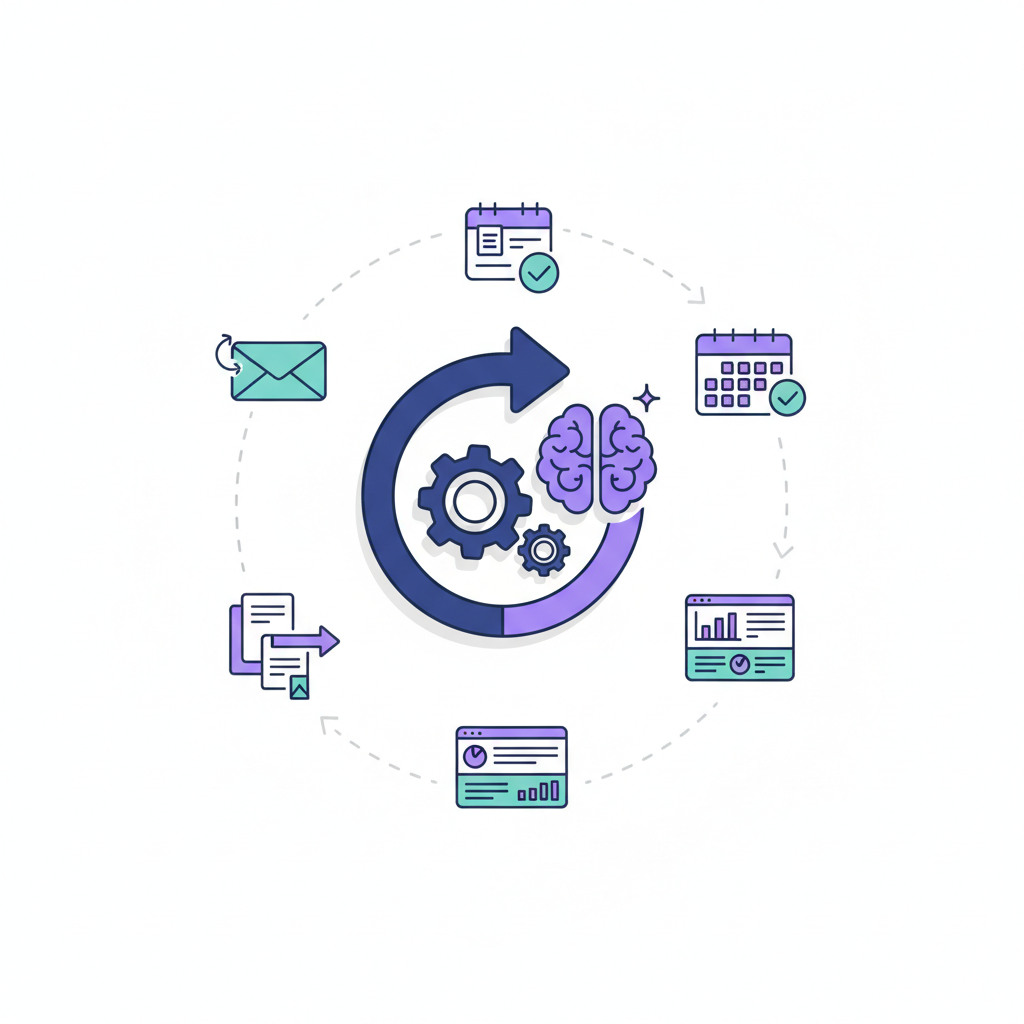
Top 10 AI tools for Enterprise Workflow Automation
Enterprises are turning to AI-powered workflow automation to eliminate manual processes, cut costs, and accelerate strategic execution. Unlike traditional automation, AI can handle unstructured data and make intelligent decisions, offering profound benefits across finance, HR, and IT. This guide curates the top 10 AI tools—from RPA leaders like UiPath and Automation Anywhere to iPaaS solutions like Workato and low-code platforms like Microsoft Power Automate—providing a blueprint for building a more agile and resilient organization.